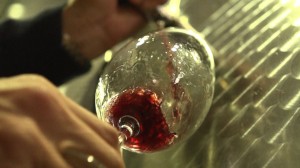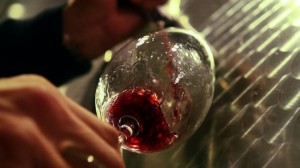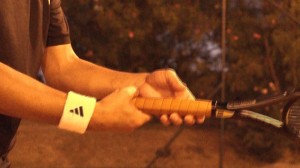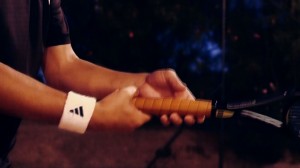SONY FS100: SMOOTH SLOW RECORD, GIMMICK?
C300 or Scarlet? Hmm. For me the choice is easy. Neither. I can’t afford them. Stu Maschwitz wrote a very good piece recently examining the current large sensor landscape available to us seemingly never satisfied consumers. In it he said of the FS100:
This camera isn’t going to knock your socks off with colorimetry or latitude, but it deserves our attention for shoring up many of the shortcomings we lament in our HDSLRs without leaving the price strata that inspired its existence.
I own an FS100 and I actually think that’s pretty fair. As I’ve begun post production on my longer projects with the camera I’ve begun to really like it however, and the 1080 slow motion is just a wondrous thing. One of the more curious features of the camera is a little button on the side labelled ‘smooth slow rec’. Selecting this option sets the camera to record 3 seconds of high-speed footage at SD resolution. This gives you 12 seconds of footage so logic says this must be 100 fps. As soon as you say SD, then most users turn their noses up at the feature and never use it. But why?
Shooting in smooth slow record mode is a little odd, you press record, the camera then buffers up 3 seconds of footage before then actually recording it as 100fps meaning you get an instant replay at the final speed as soon as you finish shooting. Which is quite fun. Taking it into the edit the footage is generally quite problematic. You’ll see a whole heap of aliasing and strange colour blips around areas of high contrast. I shot a rolling sea in a wide shot and it was just a horrible horrible mess, like the very worst of that classic DSLR moiré. There’s no doubt, a better piece of glass in front helps to alleviate this as does not pushing the latitude of the shot too much. The camera effectively upscales the SD image to 1080i giving you an interlaced high speed shot which you can then effectively slow down by 50% to effectively 200fps again without too much difficulty (see the shot of the guy emerging from the water 3’46”, or the corks dropping 1’05”).
The question is, would you ever bother?
I shot 35 days straight with the FS100 out in Mauritius, South Africa and Reunion Island and we found ourselves just flipping on smooth slow rec for a laugh from time to time. We didn’t really know whether it would actually make it into final edits but there was often not reason not to. And the results? Well, see for yourselves. Here’s a montage of shots, edited ‘blog’ style which is a pretty good spread of different scenarios we shot in. For me, the cork, the fire dancers, the bottle into the water and the faces work pretty well. However, there has been a pretty severe amount of noise reduction applied to the clips just to make them vaguely workable. This of course results in fairly drastic softening of the image overall. The tennis shots were done with around 24db of gain with the kit lens and were pretty noisy, and very orange thanks to the crazy lights on the court. The fact they look even vaguely decent is a minor miracle.
I’ve actually dropped a couple of these shots into edits and they’ve been fine. Funnily enough, when I shot this video in 2006 the Phantom op (complete with beard, so so techie) leaned over and whispered in hushed awe that soon, dare to dream, they’d be doing their work in actual HD. That was a huge deal back then. My shots turned up at SD res btu I still loved what we’d been able to create. It’s a bit strange calling action only to call cut a few seconds later and discover you’ve shot 3 minutes worth.
Smooth slow rec isn’t going to give you a cut price Flex, not even slightly. However, I highly recommend just giving it a go from time to time when you think it might give you something. For web based delivery it’s more than possible to drop a few shots in and have a perfectly watchable piece of work. Your other option is Twixtor which can be stunning on large, simple objects moving forwards or back but on anything with fine detail moving across the screen it’s just useless. At least with the smooth slow rec you’re getting real frames to work with. Going back to a normal HD sequence after editing the film was very strange, like a film of dirt had been wiped off my eyes. SD is okay but I doubt it will be too long before we have 100fps HD as a standard feature on cameras at this price point and I, for one, will be very happy.
Robin
@aka_skid
-
http://www.facebook.com/profile.php?id=100001714381607 François Regis
-
Chron
-
jfdaysleeper













